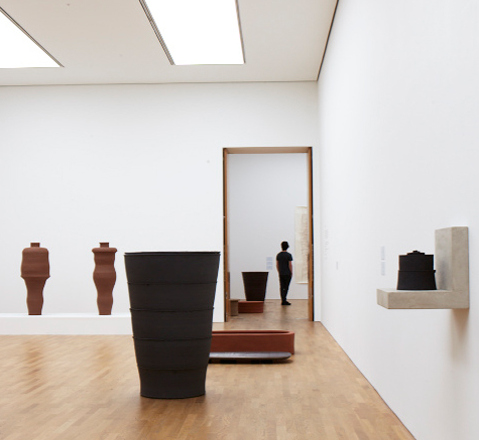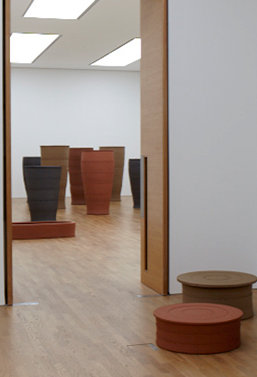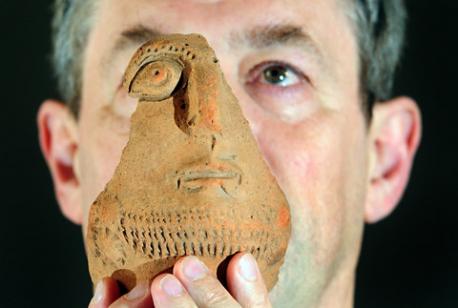English artist Julian Stair is both a wordsmith and a potter, working mostly with site-specific commissions and installations. Commissioned by mima and devoted in part to the memory of his late family member Lesley Cox, “Quietus: The vessel, death and the human body” is Stair’s exploration of “the human body after death.” It’s an installation ten years in the making and features drawings, cinerary jars and life-size sarcophagi.
The exhibit considers our final resting place – be it a coffin or a crematorium – by stripping it down urns and the like to their simplest forms. In turn, we gain new clarity and profundity in our reflections on death and dying.
“It is Stair’s exploration of “the human body after death,” ten years in the making, and features drawings, cinerary jars and life-size sarcophagi.”
Stair completed his PhD at the Royal College of Art in London and characterizes his work as “[varying] in scale from domestic to monumental, [defined by] a subtle palette of greys, reds and white in stoneware, porcelain and brick clay.” Indeed, there is a sense of elemental harmony in all of Quietius’s pieces, no matter how austere. In one area of the installation, the viewer stands in front of a shelf that is stacked to the ceiling with cremation vessels. We feel at once overwhelmed and at ease amongst this colony of urns, which are composed of the most grounding, comforting materials, but evokes one of the most unnerving subjects: death.
“We feel at once overwhelmed and at ease amongst this colony of urns, which are composed of the most grounding, comforting materials, but evokes the one of the most unnerving subjects: death.”
Mima curator James Beighton comments that, “Whilst there is an immediacy to the beauty of his vessel [and] the classical refinement of the form, there is also a focused and ongoing investigation into a concern that touches humans from all backgrounds…for much of human history, the primary material for these forms has been clay. Stair takes his exploration of this relationship through to a terminal moment, to consider what role the vessel form might play in this final right of passage as the remains of the body are interred.” Indeed, Stair strips down the decorum of the end-of-life vessel, urn or casket to show how it pays homage to the human form. The coffins have elegant, clean cut-outs while the urns remain, in many instances, almost raw in their materials. It’s a nod to the realization that, essentially, we’re just refined hunter-gatherers. Stair takes that reality — that line between man’s crudeness and potential for sophistication — and brings it into the discussion on end of life.
You may enjoy:
- Before It’s “Too Late”: Seniors Share Fears Before Death
- Somebody That I’ll Never Know: A Tribute to Organ Donors
- The Lifespan of a Poem: “And Death Shall Have No Dominion”

 Artist Julian Stair: The Vessel, Death and the Human Body
Artist Julian Stair: The Vessel, Death and the Human Body






 “Summons” by Aurora Levins Morales
“Summons” by Aurora Levins Morales

 AMA Adopts New Policies Expanding Access to Palliative Care
AMA Adopts New Policies Expanding Access to Palliative Care














